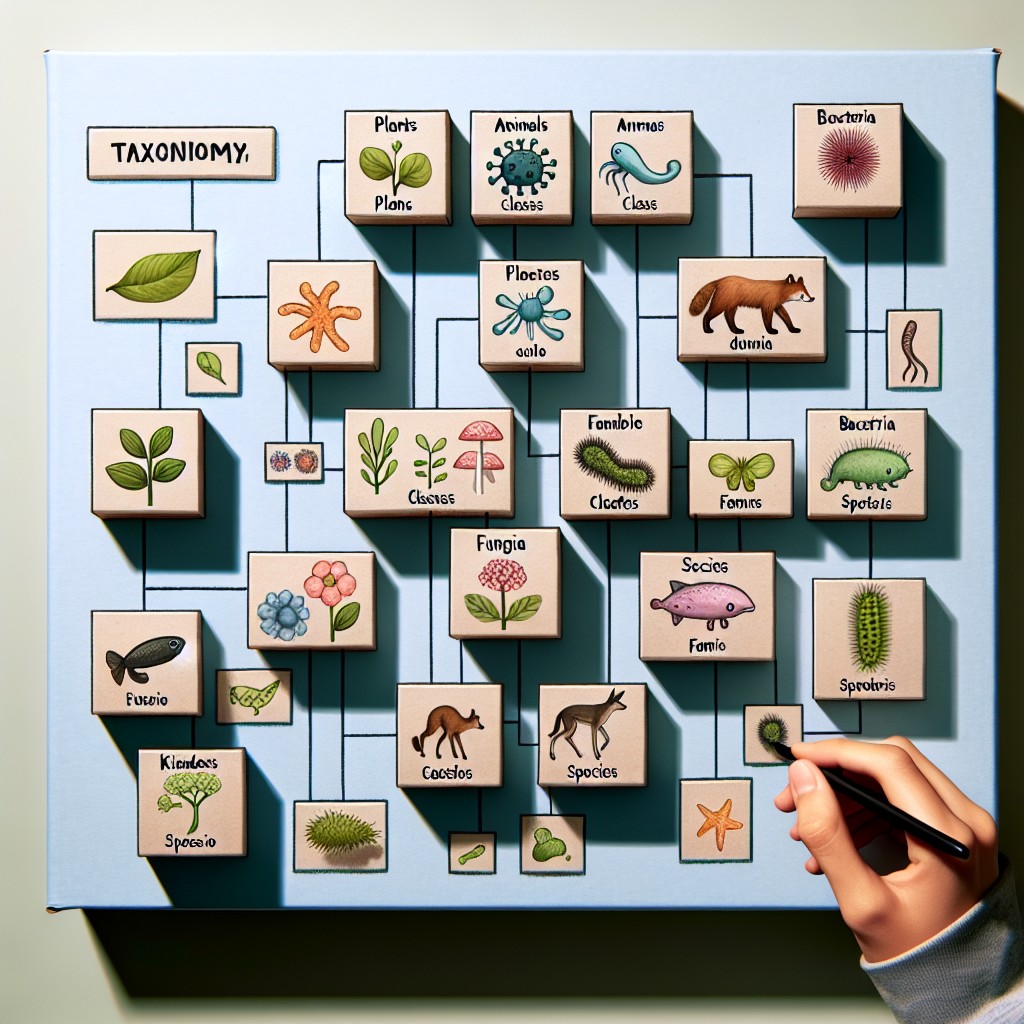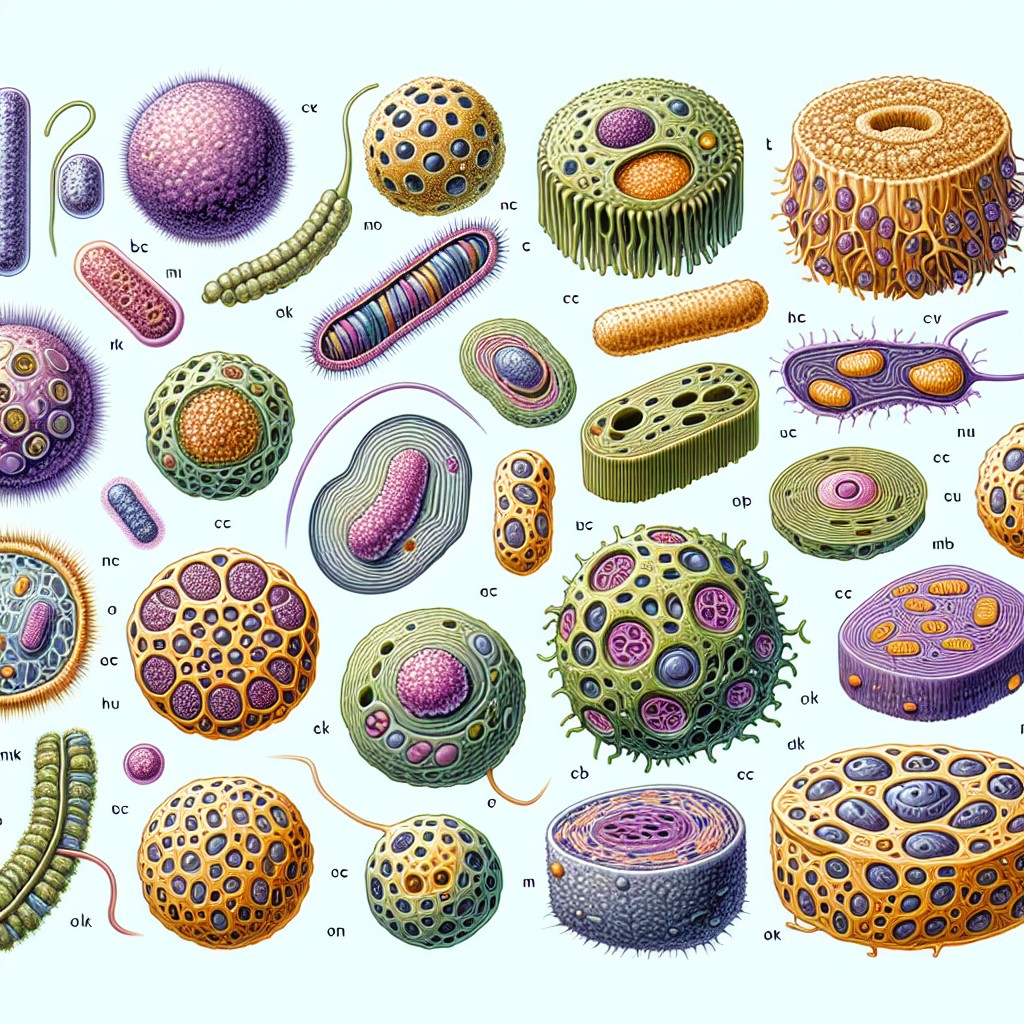
The term organism means anything that is living and all organisms whether they are plant, animal, bacteria are made of microscopic cells, each type with unique cell structure.
Common Characteristics of all cells
Similarities of Eukaryotic Cells
Unique Characteristics of Animal Cells
Unique Characteristics of Plant Cells
The term organism means anything that is living and all organisms whether they are plant, animal, bacteria are made of microscopic cells. In fact all life on earth began as single celled organisms which over time have combined into more complex life forms.
The question as to whether a virus is alive or on the border between life and a bag of chemicals is widely contested. Many biologists maintain that viruses are not living as they are not made of cells. Additionally viruses do not multiply by themselves but instead infect a host cell which replicates and copies the virus as it does so. The question as to whether a virus is alive or on the border between life and a bag of chemicals is widely contested.
Common Characteristics of all cells
All cells contain a plasma membrane and cytoplasm.
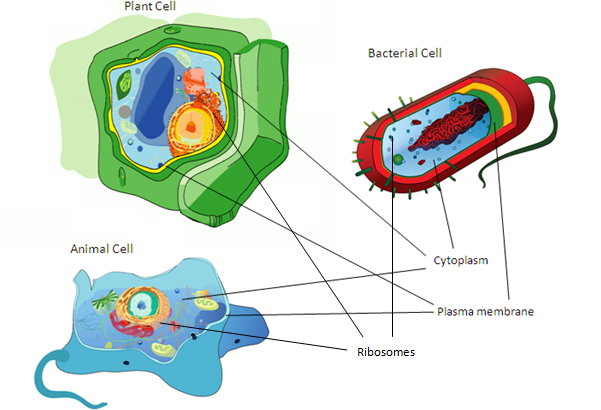
Cytoplasm
Cytoplasm is a fluid that surrounds the inner-workings of the cells and allows the Ribosome to float around in all the cells. The Ribosome are small spheres that assemble amino acids and create proteins. In animal and plant cells the cytoplasm allows other organelles to float around in a medium including Chloroplast and mitochondria.
Plasma Membrane
This acts as a sack containing the cytoplasm and other parts of the cell. In animal cells it acts as a barrier between the cell and its surroundings while plant and bacterial cells have an additional protective layer. In all cells it also has the important job of allowing certain substances in or out of the cell.
Ribosomes
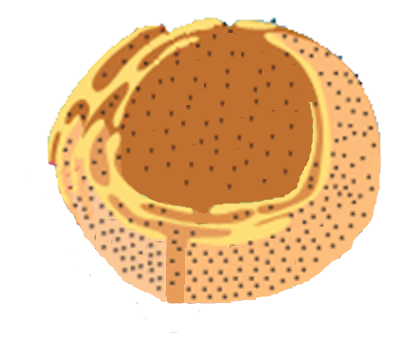 Ribosomes are small components (the black dots in the image) that can be free floating in the cytoplasm or found attached to the Endoplasmic Reticulum (ER). They consist of Ribonucleic Acid (RNA) and amino acids. They have the job of forming the proteins that make up organic structures etc from amino-acids. Under chemical instructions from the nucleus, in the case of Eukaryotic cells, they take small amino acids and make long strings which form proteins. Ribosomes are found in both eukaryotic and prokaryotic cells.
Ribosomes are small components (the black dots in the image) that can be free floating in the cytoplasm or found attached to the Endoplasmic Reticulum (ER). They consist of Ribonucleic Acid (RNA) and amino acids. They have the job of forming the proteins that make up organic structures etc from amino-acids. Under chemical instructions from the nucleus, in the case of Eukaryotic cells, they take small amino acids and make long strings which form proteins. Ribosomes are found in both eukaryotic and prokaryotic cells.
Two types of Cells
All cells can be categorised into one of two types of cells. Cells that have a nucleus are known as Eukaryotic Cells and those that do not have a nucleus which are known as Prokaryotic Cells.
Prokaryotic Cells
These are cells that have no nucleus or mitochondria such as bacterium and yeast cells.
Bacterium cell
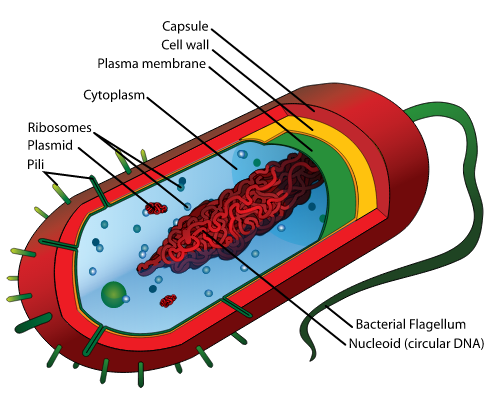
Pili
Pili (plural) or pilus (singular) is the name for small hairs that protrude from the surface of many bacteria. There are several types of hairs including the conjugative pili that transfers DNA from one bacterium to another (nicknamed the sex pili). The donor bacterium will use a conjugative pilus to take hold of the recipient bacterium and pull it towards itself. The close proximity of the two bacteria causes them to fuse for a short period while the conjugative process takes place. Pores develop on the bacterium which allows a plasmid molecule to be transferred from the donor bacterium into the recipient.
Plasmids
These are molecules that contain small amounts of DNA. Whereas a chromosome contains all the information required for life a plasmid has small pieces of information. They can be thought of as updates which are passed from one bacterium to another through the conjugative process and like computer updates that protect against computer viruses, plasmids often contain genes that promote the health of the organism such as antibiotics. The plasmids can self replicate and the copy is passed to the recipient bacterium.
Nucleoid
Nucleoid means nucleus-like and is the Prokaryotic cells equivalent of the nucleus. Like the nucleus found in Eukaryotic cells the nucleoid contains the primary DNA of the cell. But whereas the Chromosomes in a nucleus are protected by a membrane known as the nuclear envelope the nucleoid has no such protection and the chromosomes just sit in a mass floating in the cytoplasm.
Cell Wall of Bacteria
The cell wall is a protective structure that surrounds the cell membrane in bacterial and plant cells but not animal cells.
In bacterium the cell wall is a porous, high tensile structure made of murein or peptidoglycan (a polymer made of sugars and amino acids) which protects the cell from internal turgor pressures. Turgor pressure is produced by the high concentration of proteins etc within the cell which push against the cell membrane creating pressure and can make it burst like an over filled balloon (animal cells rely on continually pumping out water or being surrounded by an isotonic solution).
Many antibiotics prevent the production of peptidoglycan by binding to the enzymes required in the process. Bacteria multiply through mitosis, a process of one splitting into two, and without sufficient peptidoglycan required to make the cell walls the bacteria simply burst under the turgor pressure. The main advantage of using this type of antibiotic is that peptidoglycan is not found in animal (or plant) cells and therefore causes no problems to the patient.
Capsule
The capsule that surrounds bacteria protects it from the immune system of a host. The white blood cells in animals consist of macrophages or phagocytes, cells that engulf and consume foreign cells (a process known as phagocytosis). Capsules of bacteria prevent macrophages from engulfing the bacterial cell allowing them to multiply and build colonies in the host body. In the case of harmful bacteria this allows them to spread disease and so requires antibiotics to fight the bacterial infection (see bacterial cell wall).
Prokaryotic Flagellum
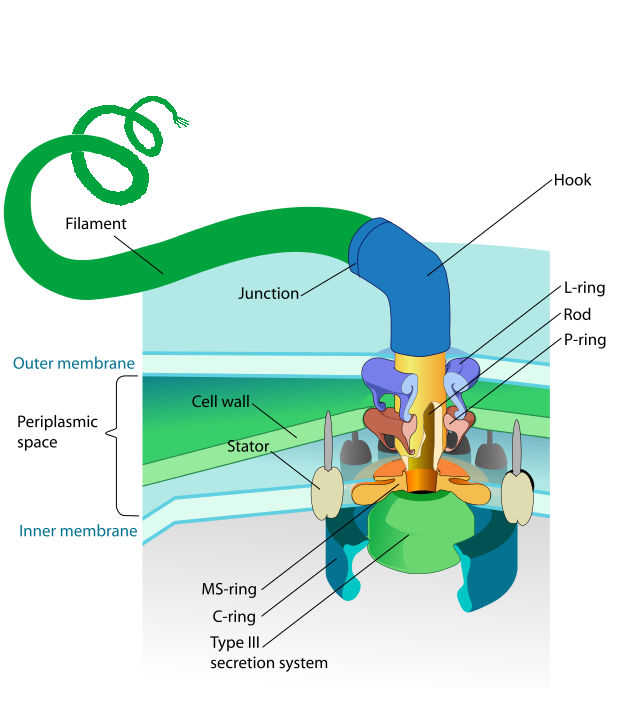
The word Flagellum comes from the Latin word for whip and in some types of cells they do look more whip-like. Found in both Prokaryotic and Eukaryotic cells the Flagellum’s main purpose is for motion. The flagellum in a bacterial cell is coiled and acts a propeller to move bacteria through its environment. Many flagellums are also used as a sensor detecting temperature and chemical compositions outside of the cell. The filament of the flagellum is powered by a complex bio-mechanical motor. The hook and junction ensures the filament is facing in the opposite direction from the bacteria giving maximum forward momentum.
Eukaryotic Cells
These are cells that contain a nucleus and include plant, fungal (not shown below) and animal cells
Similarities of Eukaryotic Cells
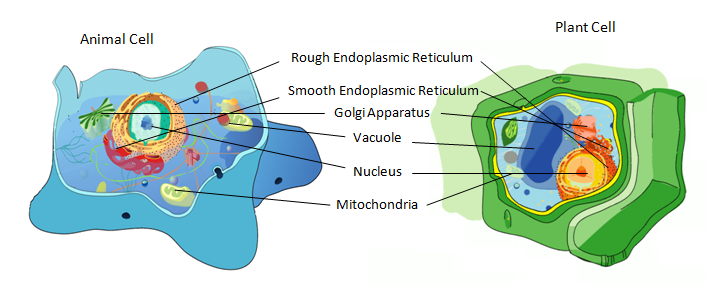
Nucleus
The nucleus contains the chromosomes and nucleic acid. The chromosomes contain the code in the form of deoxyribonucleic acid or DNA which instructs the cell of its function and commands its activity.
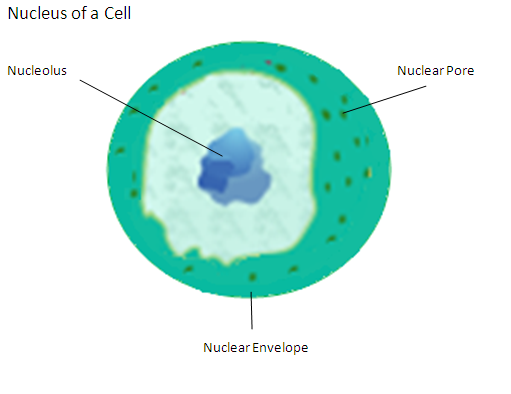
The Nuclear Envelope separates the nucleus from the cytoplasm. Made of two layers of plasma membrane and contains tiny holes known as ‘Nuclear Pores’. Within its centre is the Nucleolus.
Endoplasmic Reticulum
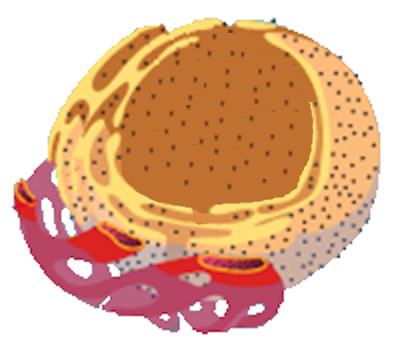
The endoplasmic reticulum is a series of tubes or flattened sacs that are connected to the nucleus and runs through the cytoplasm. The job of the endoplasmic reticulum is to speed up the distribution of substances through the cytoplasm. The size and shape depend on the functionality of the cell and is found in almost all eukaryotic, but not prokaryotic, cells. Cells found in the liver or kidneys contain large endoplasmic reticulum as they synthesise and release large amounts of proteins. There are two types of Endoplasmic reticulum, one which has ribosome that are attached to the outer side of the structure making it rough and is therefore known as the rough endoplasmic reticulum. The other has no ribosome and is therefore known as the smooth endoplasmic reticulum.
Rough Endoplasmic Reticulum
 The rough endoplasmic reticulum creates proteins of various types for use in the in the body ranging from antibodies to hormones. The mRNA (messenger RNA extracted from the DNA found in the nucleus) contains the instructions that tell the ribosome found in the rough endoplasmic reticulum what protein to make from amino acids. These proteins are then packaged and released through the cell wall and into the body where they are detected by special receptors in other cells allowing for communication throughout the body.
The rough endoplasmic reticulum creates proteins of various types for use in the in the body ranging from antibodies to hormones. The mRNA (messenger RNA extracted from the DNA found in the nucleus) contains the instructions that tell the ribosome found in the rough endoplasmic reticulum what protein to make from amino acids. These proteins are then packaged and released through the cell wall and into the body where they are detected by special receptors in other cells allowing for communication throughout the body.
Smooth Endoplasmic Reticulum
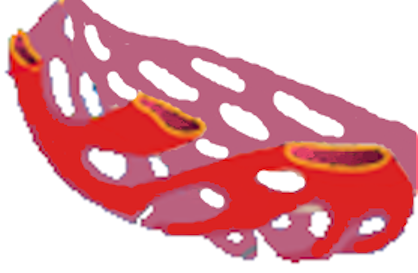 The smooth endoplasmic reticulum aides in carbohydrate and lipid synthesis, as well as many other cell-specific functions. In muscle cells the smooth endoplasmic reticulum stores calcium ions and when these are released it causes the muscle to contract. In liver cells the smooth endoplasmic reticulum contains special enzymes that are released to detoxify harmful substances. In brain cells the smooth endoplasmic reticulum contains hormones while in some plant cells the smooth endoplasmic reticulum interconnects adjacent cells.
The smooth endoplasmic reticulum aides in carbohydrate and lipid synthesis, as well as many other cell-specific functions. In muscle cells the smooth endoplasmic reticulum stores calcium ions and when these are released it causes the muscle to contract. In liver cells the smooth endoplasmic reticulum contains special enzymes that are released to detoxify harmful substances. In brain cells the smooth endoplasmic reticulum contains hormones while in some plant cells the smooth endoplasmic reticulum interconnects adjacent cells.
Golgi Apparatus
This organelle is made up of stacks of flattened sacs called cisternae. The Golgi complex, as it is also known, stores and modifies various proteins through special Golgi Enzymes. The amount of these stacks varies between animal classes, a typical mammalian cell can contain between 40 and 100 stacks. The Golgi Apparatus works alongside the Endoplasmic Reticulum taking the vesicles it produces, packaging them and then sending them on their way to the correct destination either throughout the body (known as the process of exocytosis) or within the cell.
Vacuole
Vacuoles exist in all plant, fungal and not all but most animal cells. It is a sack of water and enzyme solutions, known as cell sap, which are required by the cell to maintain hydrostatic pressure especially in plants. They play a major role in the process of cell autophagy which is a process where old or unused cell components are broken down and stored in the Vacuole sacks allowing for the waste components to be recycled and thus maintaining energy levels of the cell when no other sources are available. The size and shape of Vacuoles vary greatly depending on the amount of cell sap stored. The sap is separated from the cytoplasm of the cell by a membrane known as the Tonoplast.
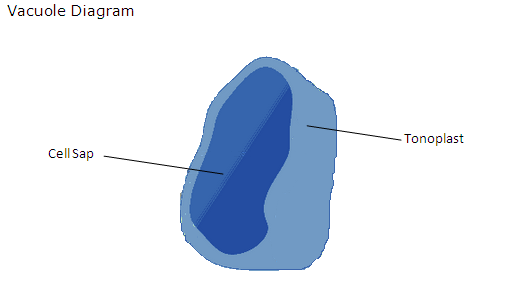
Mitochondria
Mitochondria or mitochondrion are the power production component of the cell and are very numerous (ranging from hundreds to thousands) in every cell. They produce the molecule adenosine triphosphate, also known as ATP, considered the energy currency by biologists. ATP gives all living things the energy they need to move and in prokaryotic cells it is produced in the cytoplasm of the lining of the cell and therefore only eukaryotic cells have mitochondria. They do this through a process known as ‘Cellular Respiration’ (also known as oxidative phosphorylation) whereby oxygen and simple sugars such as glucose are converted into ATP by special enzymes (biological catalysts) known as complexes I-V.
Like the Vacuole the Mitochondria also help in the process of autophagy or autophagocytosis (the process of removing and recycling old or unwanted cell matter to save energy) by regulating the destruction of the cells.
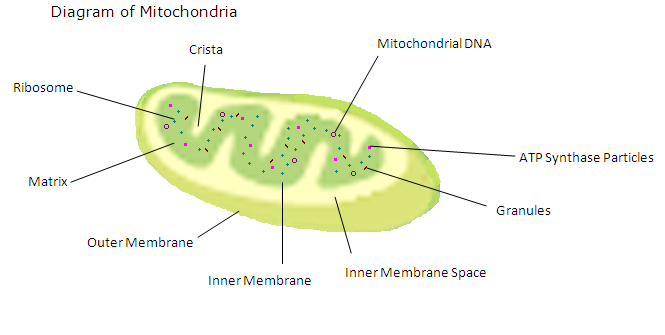
Mitochondria also contain a DNA known as Mitochondrial DNA (mtDNA). These 37 genes give the instructions to the mitochondrial functions such as the production of enzymes and making two types of RNA; transfer RNA (tRNA’s) and ribosomal DNA (rDNA).
Animal Cells
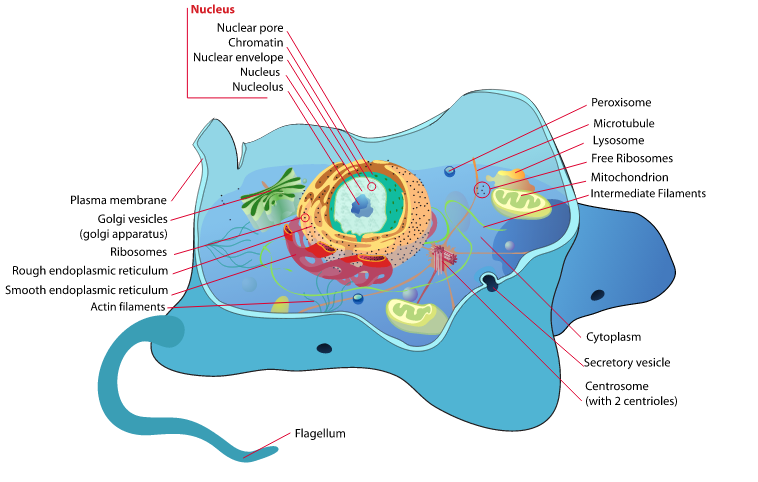
Unique Characteristics
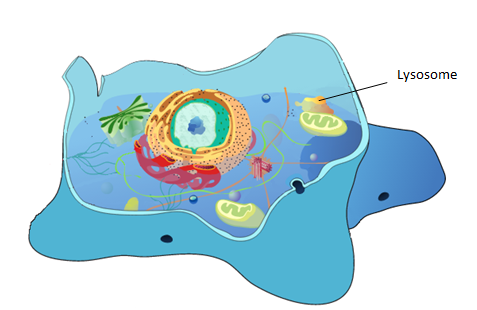
Lysosome
A cell organelle found only in animal, lysosome contain special enzymes in membrane. These enzymes are used to breakdown molecules produced by cells into their component parts. There are believed to be around 50 types of enzymes contained within the lysosome and therefore they can break down almost all molecules they encounter. These enzymes are produced in the rough endoplasmic reticulum and packaged as lysosome in the galgi apparatus of animal cells.
Plant Cells
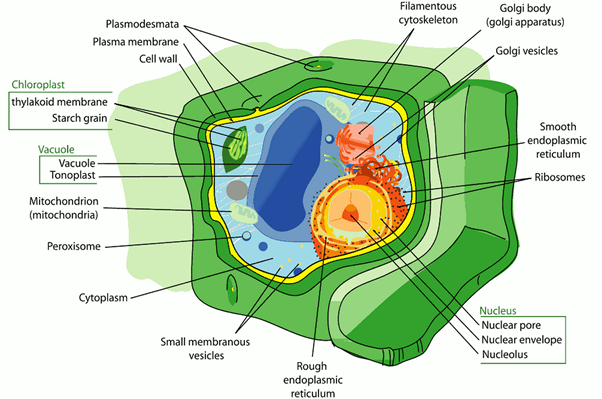
Unique characteristics
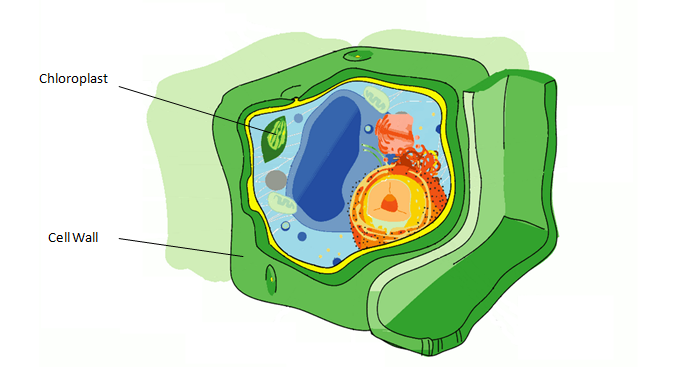
Chloroplast
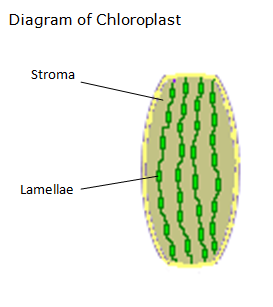 These organelles are also found in the cells of algae and are responsible for turning sunlight into energy (the process known as photosynthesis).
These organelles are also found in the cells of algae and are responsible for turning sunlight into energy (the process known as photosynthesis).
The lamellae are made of folds in the inner membrane and are surrounded by a liquid known as stroma. The folds or lamellae contain chlorophyll, a pigment which traps the sunlight and stores it as the energy molecule ATP (adenosine triphosphate). The chloroplast produces carbohydrates from carbon dioxide and water releasing oxygen as a bi-product which benefits all life on earth. The pigments, and indeed plants and algae, appear green because the green spectrum is the only spectrum not absorbed and is therefore reflected back.
Cell Wall
The cell wall is a protective structure that surrounds the cell membrane in bacterial and plant cells but not animal cells.
In plants it is made from a substance known as cellulose, which is formed from sugars, and provides a structural integrity to the cell. In plants this allows the cells to remain cuboid and thus the cells can be packed tightly together giving them their strong structure. Because their basic shape is maintained by the cell wall when the cells water level drops, and the plant droops, adding more water returns the plant to its previous shape. The cell wall contains minute holes that allow nutrients in and waste products out of the cell.


